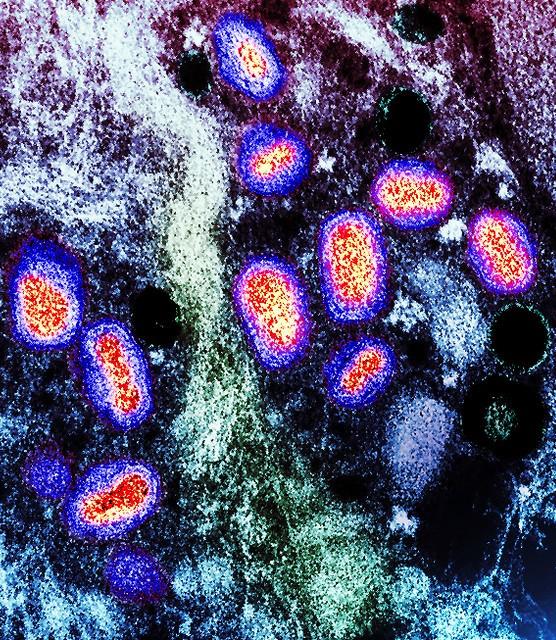A new study in BMJ suggests that a substantial proportion of monkeypox cases—53%— in the ongoing global outbreak are transmitted 1 to 4 days before symptoms appear.
Since this spring, 70,000 cases of monkeypox have been reported in hundreds of countries around the world, most with no history of the disease. Sexual activity between men who have sex with men (MSM) has driven the outbreak, and the study authors say these new findings have important implications for infection control.
The study is based on the contact tracing and surveillance findings of 2,746 UK residents who tested positive for monkeypox virus between May 6 and Aug 1, 2022. Ninety-five percent were MSM, and the average age was 37.8 years old.
The authors applied two statistical models to determine the mean incubation period and the mean serial interval period.
Serial intervals shorter than incubation period
The mean incubation period (time from exposure to onset of symptoms) was estimated to be 7.6 days (95% credible interval [CI], 6.5 to 9.9) or 7.8 days (95% CI, 6.6 to 9.2), depending on the model. The mean serial interval—time from symptom onset in the primary case-patient to symptom onset in the secondary contact—was 8 days (95% CI, 6.5 to 9.8) in one model and 9.5 days (95% CI, 7.4 to 12.3) in the other.
The median serial interval was 0.8 to 1.6 days shorter than the median incubation period, which means transmission occurred before any case-patient was aware of symptoms.
In addition, 10 out of 13 linked patients had documented pre-symptomatic transmission. Overall, short serial intervals were more common than short incubation periods for case-patients.
"Assuming statistical independence between the serial interval and incubation period, we found that 53% (95% credible interval 43% to 62%) of transmission occurs in the pre-symptomatic phase," the authors wrote. "However, since serial intervals depend on the incubation period this finding is an approximation of the proportion of infections due to pre-symptomatic transmission."
The authors said an isolation period of 16 to 23 days would be required to detect 95% of people with a potential infection.
Pre-exposure vaccination may be key
"The shorter serial intervals identified in this study are intriguing and the analysis is robust. It suggests, but does not provide definitive evidence of, asymptomatic or pre-symptomatic transmission of monkeypox," said Jake Dunning, PhD, a senior researcher at the University of Oxford, in an expert reaction posted on the Science Media Centre site.
"It's an important piece of the transmission jigsaw."
In an editorial on the study, researchers from the United States, United Kingdom, and Nigeria said the study is an argument in favor of pre-exposure vaccination.
"Postexposure or 'ring' vaccination of contacts identified only through individuals with symptoms, could be inadequate," the editorial authors write. "In the US and UK, vaccination campaigns have already shifted from exclusively postexposure prophylaxis to include pre-exposure prophylaxis for some high risk groups."
But in African countries, vaccine equity is needed before pre-exposure vaccination becomes the standard for preventing monkeypox. In Nigeria, for example, no vaccines targeting monkeypox are currently available.
US public health emergency renewed
Today the US Centers for Disease Control and Prevention (CDC) reported more monkeypox cases, raising the total to 28,619.
Yesterday the Department of Health and Human Services renewed the country's public health emergency declaration for monkeypox.






















